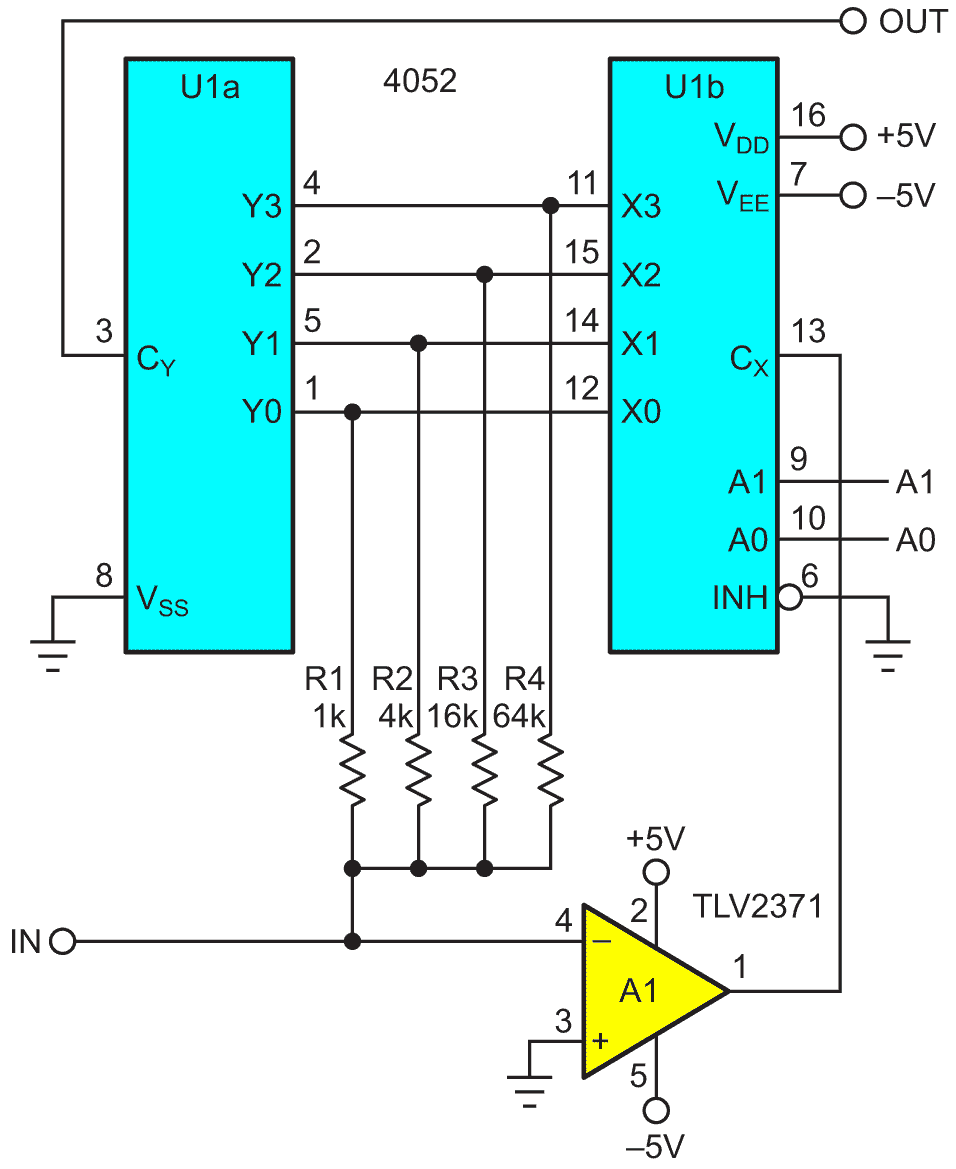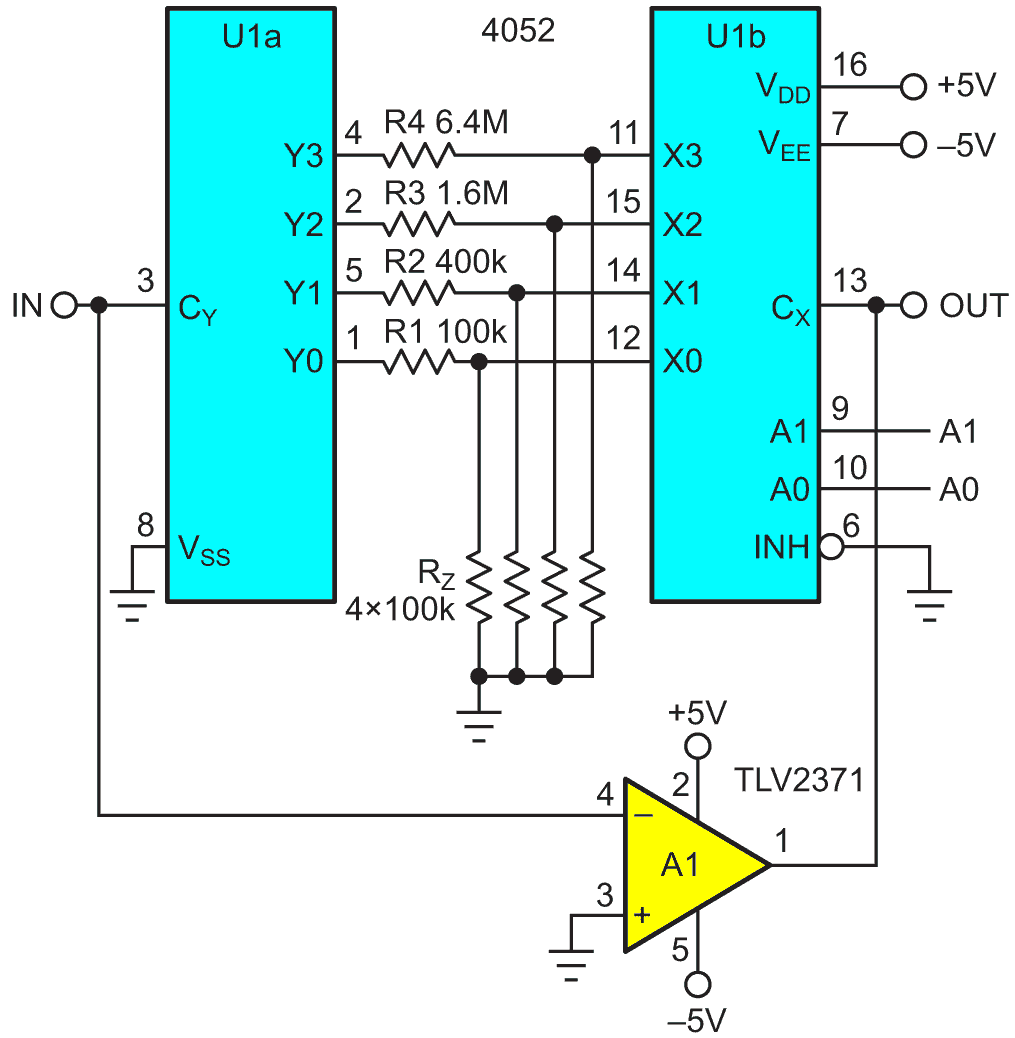The use of multiplexer chips (typically various members of the 405x family) to control gain in transimpedance (current to voltage conversion) signal-processing and data acquisition op-amp circuits, is an established practice. Using a multiplexer (mux) to select the desired feedback resistor generally works well, but mux non-ideality can sometimes introduce significant, or even intolerable, conversion error. This is mostly due, of course, to the fact that the RON (on-resistance) of the switches that comprise muxes is always greater than zero, and their ROFF (off-resistance) is less than infinity.
Happily, simple circuit topologies exist that can reduce (or even eradicate) the worst of these erroneous effects of these pesky switch parameters, the choice depending on which (RON or ROFF) is the more serious problem in a given application. Figure 1 illustrates a trick that cancels RON error.
 |
|
| Figure 1. | Canceling mux RON error by taking the output signal from the gain resistor side of switches. |
Typical mux RON values run from 100 to 1000 Ω, tend to vary significantly with fabrication process (e.g., polysilicon gate vs metal) signal level, supply voltage, and temperature. Because they are electrically in series with the resistors, they switch in and out of the circuit and create corresponding feedback gain error at the amplifier output. These errors aren’t too serious so long as the gain setting resistor is at least a couple orders of magnitude larger than RON like Figure 1’s R4 is, but can become intolerable for lower values like R1’s.
The Figure 1 circuit entirely evades these issues by employing an additional mux (U1a) to pick the output signal, not directly from A1’s output on U1b pin 13, but from the U1b pin that drives the selected gain resistor (R1 thru R4), thus bypassing and eliminating RON error.
So much for RON, but what about the other end of mux switch error spectrum: ROFF?
Mux ROFF resistances are also highly dependent on temperature and fabrication process, usually range from ones to hundreds of megaohms, and are effectively in parallel with the gain setting resistors, and thus can cause troublesome errors when gain resistors are more than a few tens of kiloohms. Figure 2 suggests a work-around when this is the situation.
Figure 2’s RZ resistors serve to route the VOUT/ROFF leakage currents of U1b to ground, leaving only millivolts to be blocked by U1a. This trick reduces ROFF error by orders of magnitude.
 |
|
| Figure 2. | Canceling mux ROFF error by the routing leakage current to ground with RZ. |
Of course, this ploy effectively places two mux RON resistances in series with the gain-set resistors (R1 through R4), and so it must be used with caution lest it cause more error than it cures.